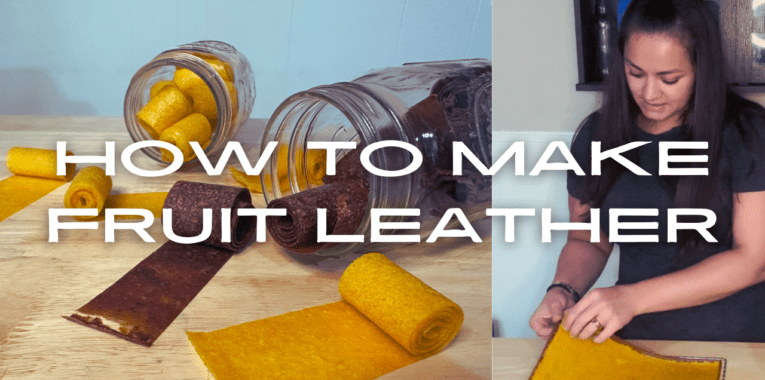Fruit leather is a great way to ensure no fruit goes to waste, including fruit you have juiced with your steam juicer! You can customize flavors and even add protein powder, if you desire!
As an Amazon Affiliate, I earn from qualifying purchases.
Customizing Fruit Leather
The flavor possibilities are endless when it comes to fruit leather! I’ve included the ingredients I used to make peanut butter apple fruit leather and pineapple mango fruit leather, but use your creativity to come up with flavors you would like and enjoy!
The most important thing is to keep your mixture an applesauce consistency. You want it to be spreadable–not too runny and not too thick.
Flavor Ideas
- PB&J – peanut powder and grapes or strawberries
- Mangonada – mango and chamoy, sprinkled with Tajin
- Triple berry – strawberry, blueberry, and raspberry
- Watermelon mint – watermelon and fresh mint leaves
- Salted caramel apple – apples and a dash of caramel, sprinkled with flaked salt
- Mango habanero – mango and habanero peppers to taste (if you like this flavor, check out my pineapple habanero jam recipe!)
What Equipment Do I Need?
To make fruit leather, it’s helpful if you have a food processor, an immersion blender, a dehydrator, and silicone dehydrator sheets that fit in your dehydrator. If you’re going to make the tropical fruit version I made in this recipe, I love this pineapple corer and slicer!
I also recommend investing in a steam juicer if you plan on doing much canning/jelly making. The reason I made fruit leather this week is because I had leftover plum pulp from making plum jelly! I wanted to use that pulp instead of throwing it away, and it worked perfectly in my peanut butter apple (plum) fruit leather!
Recipe Video
Fruit Leather Recipe
Peanut Butter and Apple Fruit Leather Ingredients
Pineapple Mango Fruit Leather Ingredients
Instructions
- In a food processor, combine ingredients until smooth.
- If you desire a smoother texture, use an immersion blender until desired texture is reached.
- Spread fruit mixture onto silicone dehydrator sheets.
- Dehydrate at 110 degrees Fahrenheit for 14 hours.
- After 14 hours, check fruit leather. You should be able to easily peel it off of the silicone sheets and it should be sticky to the touch, but not wet. If it is still wet, dehydrate at 110 degrees Fahrenheit for two more hours or until dehydrated properly.
- Cut into strips and roll up.
- Store in a glass container for up to 3 months.
